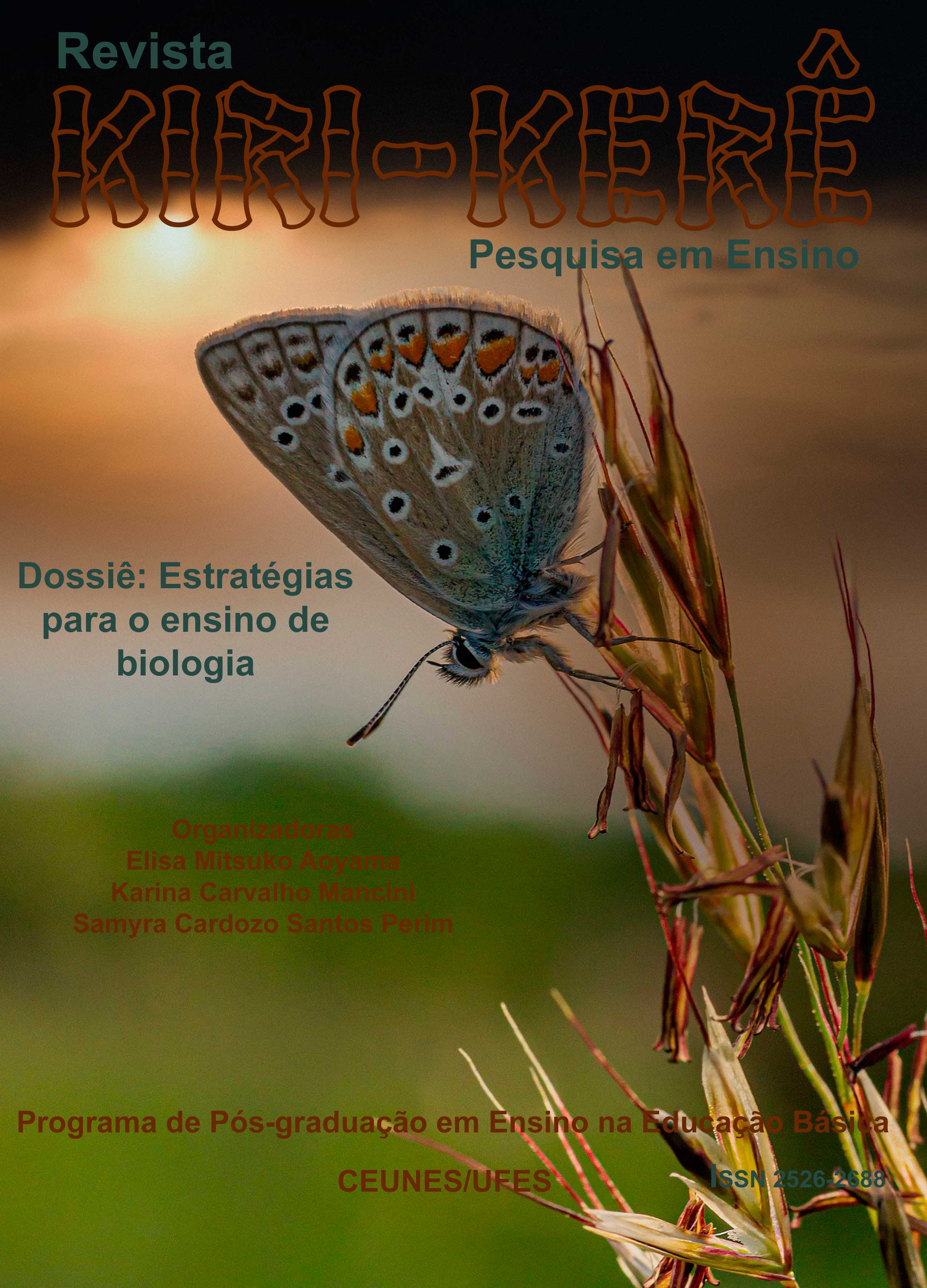Learning about food labels about food and nutrients
the use of labeling in research education
DOI:
https://doi.org/10.47456/krkr.v1i13.36648Keywords:
investigative action; food; nutrition; eating habits; healthAbstract
The function of labels is to guide consumers to understand food ingredients and promote healthy food choices. However, this does not mean that consumers use labels as a tool to choose which foods should be part of their diet. This investigative activity will address cellular biochemistry content - water and minerals, vitamins, carbohydrates, lipids, proteins, vitamins, and nucleic acids. The proposal will have a duration of 4 classes, and students will be divided into food groups, where after the exposure of images of unprocessed, processed and ultra-processed foods made by the teacher, the groups will create a label of the type of food designated for each group. Next, the teacher will challenge the students with a guiding question, and from this question they will develop hypotheses. The students will use real labels of foods that make up their diet to answer a questionnaire and compare the information on the real labels with the label they produced. A text will be produced reporting if after the research and activities done by the students, their hypotheses were right or not. Finally, there will be a round of conversation in which students can orally explain the difference between the label created by them and the real label. It is hoped that this proposal, based on the reading and analysis of food/beverage labels present in their diet, will alert and make students aware of the importance of having good eating habits, giving priority to unprocessed or minimally processed foods that contain nutrients necessary for the proper functioning of their bodies
Downloads
References
BRASIL. Ministério da Educação. Referencial Curricular Nacional para educação infantil. Brasília, 1998. Disponível em: http://portal.mec.gov.br/seb/arquivos/pdf/rcnei_vol1.pdf Acessado em: 22 de nov. de 2020
DEWEY, John. Democracia e educação: introdução à filosofia da educação. 3.ed. São Paulo: Nacional, 1959.
ESPÍRITO SANTO (Estado). SEDU (Secretaria de Educação). Ensino Médio: área das Ciências da Natureza/Secretaria de Educação. Currículo Básico Escola Estadual. Volume 02, Vitória: SEDU, 2009.128 p
FREIRE, Paulo. Pedagogia da Esperança: um reencontro com a Pedagogia do Oprimido. Rio de Janeiro: Paz e Terra. 16ª ed. 2009.
GIEHL, Raquel Bernardon Toigo. A importância das informações nutricionais nos rótulos de alimentos na intenção de compra do consumidor. Dissertação (Mestrado), Pontifícia Universidade Católica do Rio Grande do Sul, Programa de Pós-Graduação em Administração e Negócios, Porto Alegre, Rio Grande do Sul, 2008, 123f.
GROCHOWSKI, Clarice Luiza Kich. Os rótulos nutricionais como recurso didático no Ensino de Ciências. 2013. Disponível em: http://www.diaadiaeducacao.pr.gov.br/portals/cadernospde/pdebusca/producoes_ pde/2013/2013_unioeste_cien_pdp_clarice_luiza_kich_grochowski.pdf. Acesso em: 15 jun. 2019.
GUIMARÃES, Luciana Ribeiro. Série professor em ação: atividades para aulas de Ciências: ensino fundamental, 1. ed. São Paulo: Nova Espiral, 2009.
IBGE. Instituto Brasileiro de Geografia e Estatística. Pesquisa de orçamentos familiares 2017-2018: primeiros resultados/ IBGE, Coordenação de Trabalho e Rendimento. - Rio de Janeiro: IBGE, 2019. 69 p. Disponível em: https://biblioteca.ibge.gov.br/visualizacao/livros/liv101742.pdf acessado em: 16 de abril de 2021
KOVALICZN, Rosilda Aparecida. O professor de Ciências e de Biologia frente as parasitoses comuns em escolares. Mestrado em Educação. UEPG, 1999. (Dissertação).
LINDEMANN, Ivana Loraine; SILVA, Manoela Teixeira; CÉSAR, Josi Guimarães; MENDOZA-SASSI, Raúl Andres. Leitura de rótulos alimentares entre usuários da atenção básica e fatores associados. Cadernos Saúde Coletiva, v.24, n.4, p.478-486, 2016.
MACHADO, Roberto Luiz Pires. Manual de rotulagem de alimentos. Embrapa Agroindústria de Alimentos-Documentos (INFOTECA-E), 2015. Disponível em: https://www.infoteca.cnptia.embrapa.br/infoteca/bitstream/doc/1028188/1/DOC119.pdf Acesso em: 24 de nov. de 2020
MONTEIRO, Carlos Augusto; MONDINI, Lenise; COSTA, Renata BL. Mudanças na composição e adequação nutricional da dieta familiar nas áreas metropolitanas do Brasil (1988-1996). Revista de Saúde Pública, v. 34, p. 251-258, 2000.
SASSERON, Lúcia Helena. Alfabetização científica, ensino por investigação e argumentação: relações entre ciências da natureza e escola. Ensaio Pesquisa em Educação em Ciências (Belo Horizonte), v. 17, p. 49-67, 2015.
SOUZA, Sônia Maria Fernandez da Costa; LIMA, Kenio Costa; MIRANDA, Henio Ferreira; CAVALCANTI, Francisco Ivo Dantas. Utilização da informação nutricional de rótulos por consumidores de Natal, Brasil. Revista Panamericana de Salud Publica, v. 29, n.5, p.337-343, 2011.
Downloads
Published
Issue
Section
License
The authors accept, when sending their works, the assignment of their copyrights.

